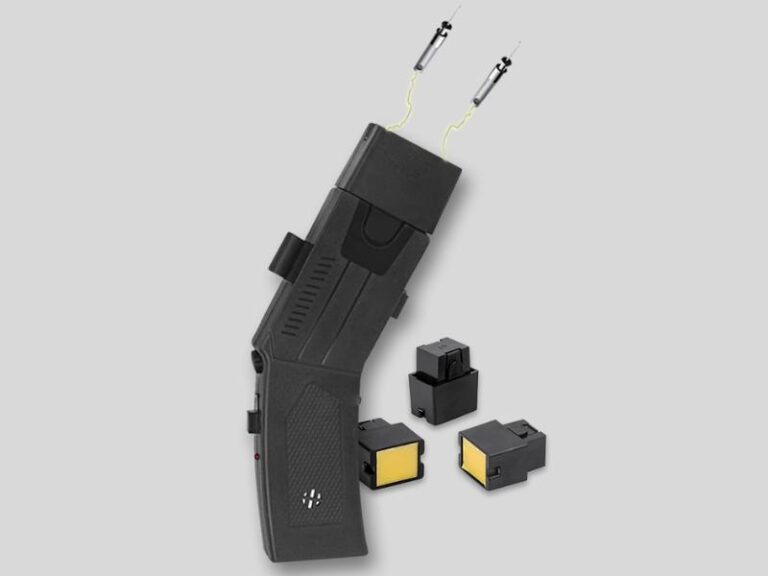Table of Contents
- Understanding the Importance of Posture for Effective Stun Gun Use
- Optimal Stance Techniques to Maximize Control and Safety
- Common Posture Mistakes and How to Correct Them
- Training Tips to Maintain Proper Form Under Stress
- Insights and Conclusions
Understanding the Importance of Posture for Effective Stun Gun Use
The effectiveness of a stun gun is not solely dependent on the device itself but significantly influenced by how you position your body during use. Maintaining a confident and balanced posture ensures that you can quickly and accurately target the assailant while minimizing the risk of self-injury or loss of control. Key elements include keeping your feet shoulder-width apart for stability, bending your knees slightly to absorb shock or sudden movements, and aligning your shoulders with your target to optimize aim. This stance creates a solid foundation that enhances both your reaction time and precision in high-stress situations.
Mastering the right stance involves:
- Center of gravity awareness: Stay low and balanced, avoiding leaning back or forward excessively.
- Arm positioning: Keep your dominant arm steady and extended to reduce muscle fatigue and maintain aim.
- Engaged core: Activate your abdominal muscles to enhance control and absorb any counter-movement.
- Foot orientation: Point your toes towards your target to promote quick directional shifts if needed.
By incorporating these posture principles, you not only improve the stun gun’s effectiveness but also boost your overall confidence and readiness. Proper alignment and controlled body mechanics are crucial, turning a potentially chaotic encounter into one where you remain composed and in control.
Optimal Stance Techniques to Maximize Control and Safety
Achieving maximum control and safety when wielding a stun gun begins with adopting a solid stance. Position your feet shoulder-width apart to create a stable base, allowing you to quickly adjust your balance as needed. Keep your knees slightly bent to absorb any sudden movements and maintain a lower center of gravity. Your dominant hand should hold the stun gun firmly but without excessive tension, while the other hand can be placed in a defensive posture or ready to assist. This approach not only enhances your precision but also minimizes the risk of accidental drops or ineffective strikes.
Incorporate these stance tips to maintain readiness and protect yourself effectively:
- Feet alignment: Ensure your toes point slightly outward for better balance.
- Upper body posture: Keep your shoulders relaxed and squared towards the threat.
- Grip technique: Use a firm but flexible grip that allows quick deployment.
- Eye coordination: Focus your gaze on the target area to improve accuracy.
Common Posture Mistakes and How to Correct Them
One of the most frequent errors people make when handling a stun gun is adopting a stiff, overly rigid stance. This not only hinders your mobility but also affects your balance, making it harder to react quickly in a tense situation. Another common slip is the tendency to stand with feet too close together, which compromises stability. Instead, aim for a natural, shoulder-width stance that keeps your center of gravity grounded. Avoid locking your knees and keep a slight bend to maintain flexibility without sacrificing strength. Additionally, many users neglect the position of their non-dominant hand; it should stay relaxed and ready for support without obstructing your line of vision or movement.
Another prevalent mistake is poor upper body alignment. Users often lean too far forward or backward, either from nervousness or incorrect training, which can cause premature fatigue and reduce control over the stun gun. Keep your shoulders relaxed and slightly drawn back, and make sure your neck stays aligned with your spine to prevent strain. Remember, your head and eyes should always be up and focused on your target-not down at the device or your feet. To recap, here’s a quick checklist for proper posture correction:
- Feet: Shoulder-width apart, knees slightly bent
- Upper Body: Evenly balanced, shoulders relaxed but engaged
- Hands: Dominant hand firmly on stun gun; other hand relaxed but prepared
- Head Position: Neck aligned, eyes focused forward
Training Tips to Maintain Proper Form Under Stress
Consistent practice under simulated pressure is key to ingraining muscle memory that keeps your posture intact. Integrate breathing techniques such as controlled, deep inhales and exhales to manage adrenaline spikes and maintain composure. Pair this with drills that mimic real-life scenarios, encouraging fluid, natural movements rather than rigid, rehearsed actions. This approach ensures that when stress hits, your body instinctively defaults to the correct stance and grip, reducing hesitation and enhancing control.
Focus on maintaining a balanced center of gravity by slightly bending your knees and distributing your weight evenly on both feet. This stance not only increases stability but allows for quicker reaction times. Incorporate exercises that improve core strength and lower body endurance, since a strong foundation helps you retain proper form even as fatigue sets in. Remember, staying relaxed yet alert is a crucial mindset-tension often disrupts technique, so practice keeping your muscles engaged without unnecessary stiffness.
Insights and Conclusions
Mastering proper posture and stance when using a stun gun is more than just a technical skill-it’s about ensuring your safety and effectiveness in a critical situation. By adopting the right stance, maintaining balance, and understanding how to position your body, you not only improve your ability to deploy the device quickly but also reduce the risk of injury to yourself. Remember, confidence and preparedness go hand in hand. With consistent practice and awareness, you can elevate your personal security measures to a whole new level. Stay safe, stay ready, and always prioritize proper technique.Check Our Other Blogs
- StunGun – Your Trusted Source for Stun Guns, Laws, and Self-Defense Tips
- PepperSprayLaws – Your Trusted Resource for Pepper Spray Information
- StunGunLaws – Your Trusted Guide to Stun Gun Legality and Safety





